Chongqing:

These buildings are built in the traditional style of local "hanging houses" which are built on wooden stilts.
In the ancient time, the caves occupied by the Ba and Chu native people were dark and damp and often under attack by the wild beasts. Shennong Shi, the tribe leader, taught them to build this style of house (known as Diaojiaolou) on the banks of the river.
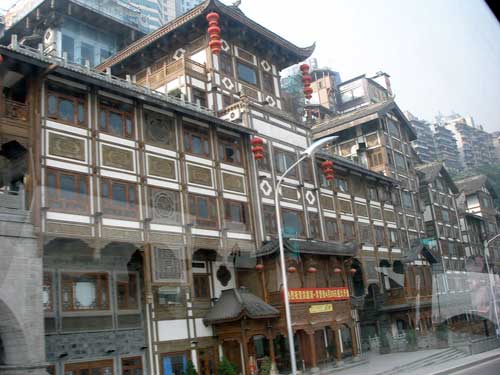
More lovely architecture in the city. All of these buildings were built after WWII, since fire bombing completely destroyed the city.
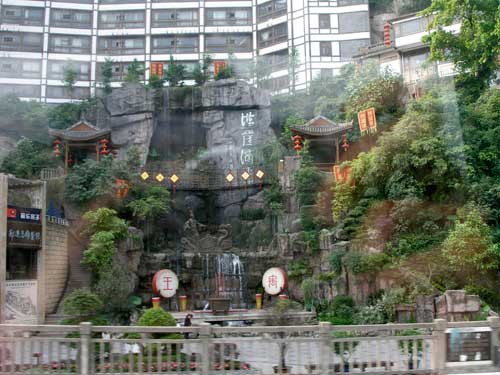
Gardens and fountains
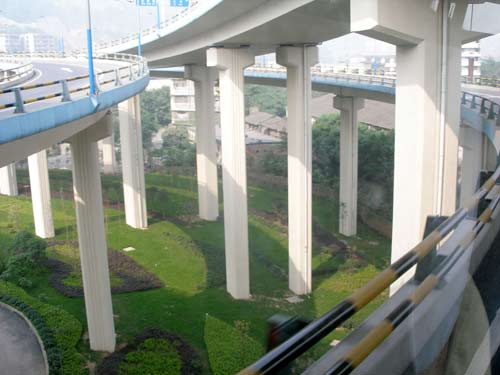
Very modern ramps and interchanges
On the road:
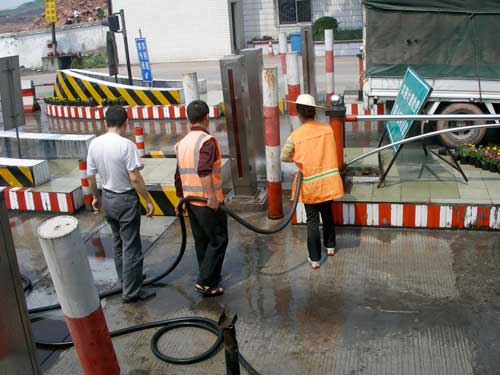
Working at the toll booth
Toll booths litter the expressways. They are meant to help pay for the new roads. At the end of 2008, there were 37,500 miles of expressways in China, the second-largest amount in the world after the United States, which has nearly 62,000 miles.
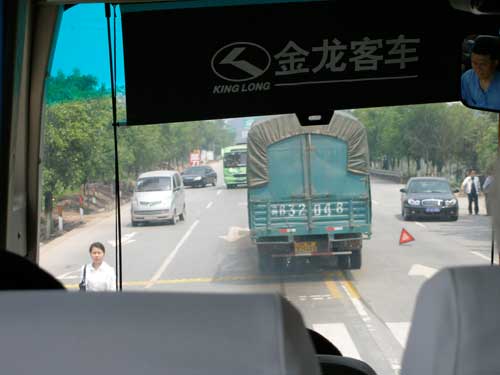
One must be flexible on the roads, which apparently includes freely using the lanes of oncoming traffic.
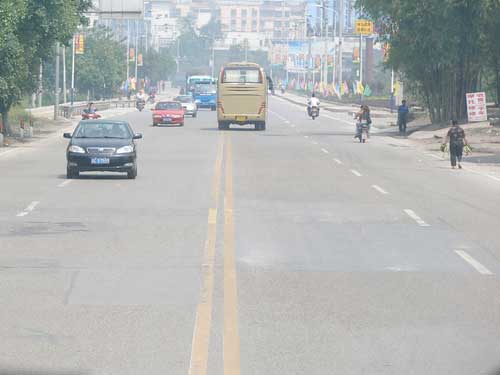
Lanes seem to be more for decoration than function.
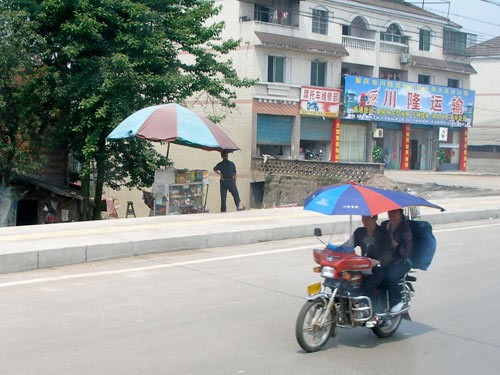
A touch of comfort
Passing through Dazu:
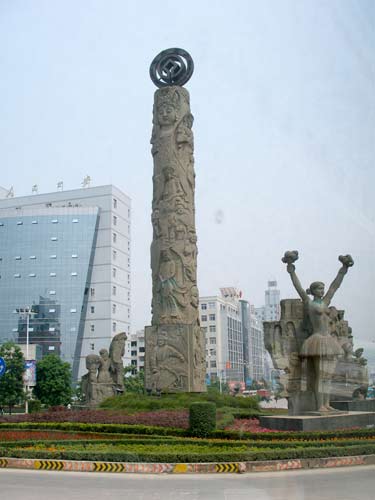
A traffic circle statue
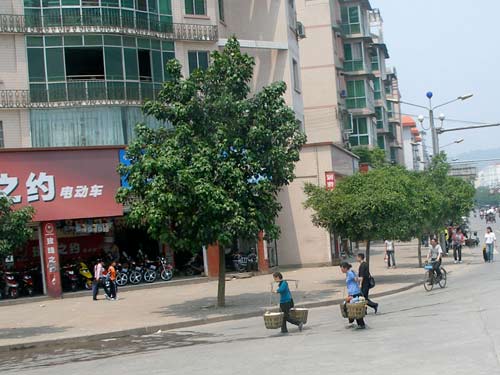
The traditional way of life still finds its way into the bustling city.
And finally on to the rock carvings:
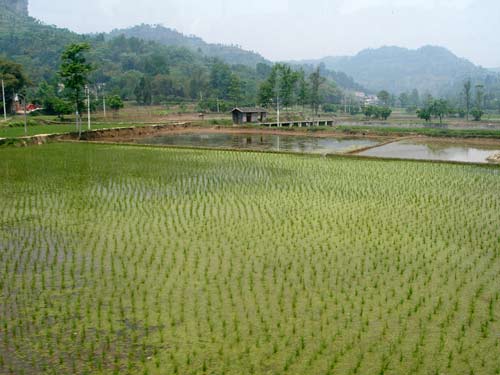
Rice fields
Rice is usually planted in April and harvested in August. Sometimes a farmer will have two crops per year, and in south where it gets hot, that number can get up to three crops. There is no room on the mountains for rice, so usually potatoes and corn are grown instead.
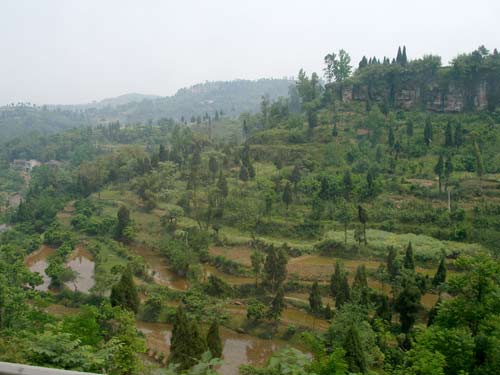
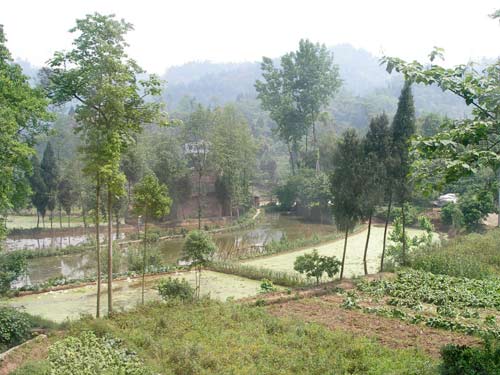
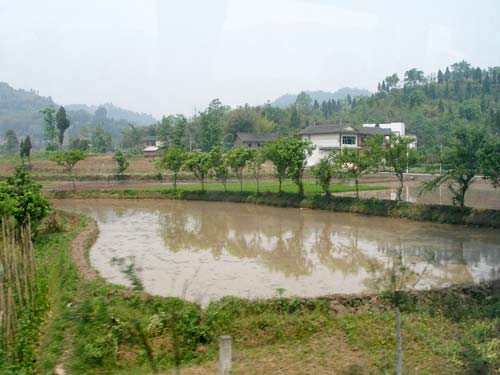
Many of the houses are no longer poor. The children work in the cities and send money to their parents to build larger houses.

